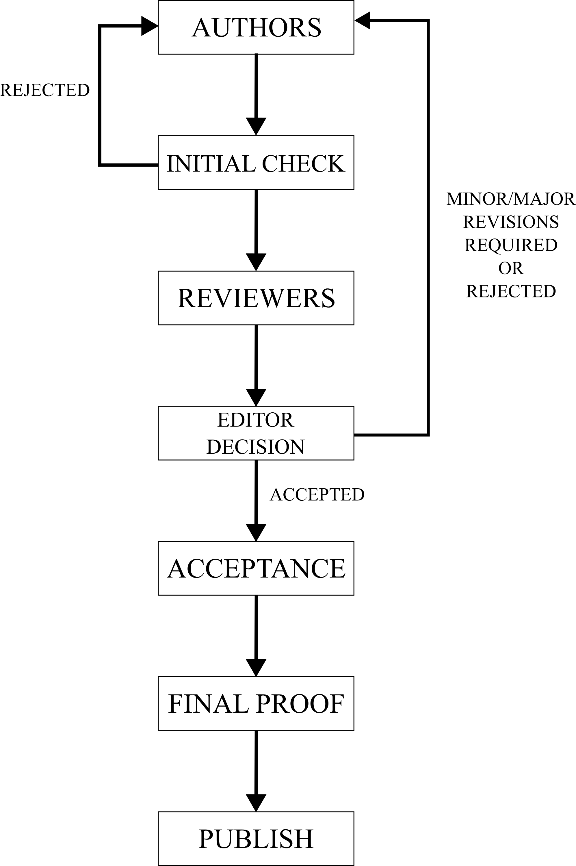Peer review Process
Step of Initial Screening
The Managing Editor will carefully evaluate each paper submitted to Indigenous Agriculture (IA) in order to establish its eligibility through checks regarding format, readability, plagiarism, and scope. Before being read by peer reviewers, manuscripts that are found to not fulfill the journal's requirements will be rejected. The Editor-in-Chief will confirm any rejection decisions made at this time.
Peer-Review
Following the initial screening, manuscripts that pass will be sent for peer review by two independent experts. The Double-Blind technique of review will be used, in which neither the reviewers nor the authors are aware of one another's identities. The reviewers' conclusions and recommendations serve as the foundation for the editors' judgments about publishing, revision, or rejection.
The assistant internal editor will request experts, including suggestions from academic editors, in the case of regular submissions. Members of the journal's editorial board and guest editors may also be considered among these experts. Reviewers are prohibited from working or collaborating with any of the institutions affiliated with the authors of the submitted article, nor are they permitted to have published with any of the authors in the three years before. Reviewers will be chosen based on their reputation in the relevance of their area of expertise.
Editorial Decisions and Revisions
After the article had passed peer review, the editor or editorial board takes into consideration the comments written by the peer-reviewers and makes the decision on the following:
-Accept after Minor Revisions-
The manuscript will be published in the journal with a request for minor revisions from the author. Authors have one week to make revisions.
-Reconsider after Major Revisions-
The manuscript must be revised before it is accepted. The authors must also make the adjustments recommended by the reviewers and/or editors before the journal will publish the article. If parts of the reviewers' remarks cannot be changed, the authors must offer detailed answers. The updated article must be submitted again by the authors in a timely manner, and the revised version will be returned to the reviewers for further comments. If authors require longer revision time than the editors have requested, we recommend that authors withdraw their manuscript before resubmitting to prevent additional time pressure and to guarantee that all submissions have been revised.
-Reject and Encourage Resubmission-
The submission requires revision but with substantial changes like more research is needed to support the findings. The authors will be encouraged to submit it again after further research have been conducted.
-Reject/Decline-
There are substantial problems with the article, or it does not make a significant contribution to science and technology development. Even if the author makes substantial revisions, the journal will not publish the article.
A point-by-point response should be given to each reviewer's comment. The author should give a clear and concise response as well as strong academic and practical evidence if they disagree with the reviewer.
Production, Publication, and Author Rights
After the article has been accepted, it will go through the following important steps: manuscript editing, English editing, author proofreading, final correction, pagination, and publication on https://journal.unhas.ac.id/index.php/ia. By submitting a manuscript, the author gives the publisher Indigenous Agriculture (IA) the exclusive right to publish the work in print and online. Figures and tables from the journal may be reproduced without asking permission as long as a source citation is included.
Submission process in the figure


